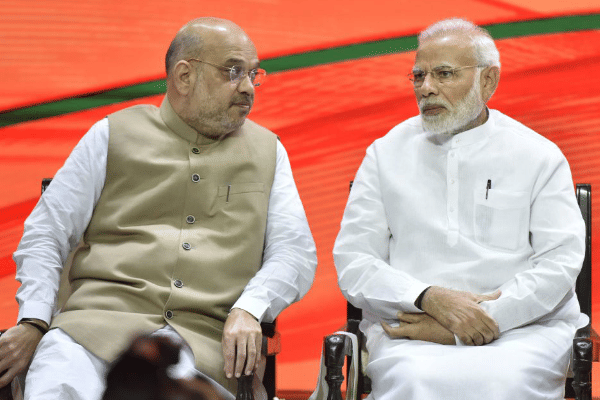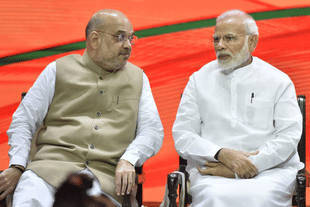Politics
What The BJP Can Do To Correct Its Floundering Communication Strategy
Atul Kadian
Dec 22, 2018, 03:02 PM | Updated 03:02 PM IST
Save & read from anywhere!
Bookmark stories for easy access on any device or the Swarajya app.


In the last few days, there has been extensive debate on the unexpected outcome in assembly elections in three key Hindi heartland states. A consensus seems to be emerging that the results were a victory of the “populism” of the Congress over the “fiscal prudence” of the ruling dispensation.
To be fair, there is no denying that announcements like the massive minimum support price (MSP) hike, full farm loan waiver, and guaranteed unemployment allowance did significantly impact the final voting choice of the electorate. But can we, therefore, conclude that winning an election in India is all about “competitive populism”? Is there no other lesson to be learnt from these results?
Inasmuch as the results were a comment on the Modi government, this regime has some impressive achievements to its credit: low inflation, structural reforms – the goods and services tax (GST), Real Estate (Regulation and Development) Act, 2016, bankruptcy law, smart implementation of subsidy and other social schemes, no taint of corruption, impeccable national security, better roads, improved electricity, and more.
Is doing all of this useless in helping win elections? Or were the election results more a case of the Bharatiya Janata Party (BJP)’s inability to communicate the “indirect” benefits of these steps to the masses effectively?
Let’s try to analyse the BJP’s communication channels for key electoral voting blocs.
Poor and Marginalised
This government has worked for the underprivileged or weaker section of society from day one and has been able to deliver tangible results to them. Distributing gas cylinders, dispersing MUDRA loans (MUDRA is the acronym for “Micro Units Development and Refinance Agency Ltd”), building toilets, constructing houses, providing healthcare and so on have earned tremendous goodwill for Prime Minister Narendra Modi among the poor sections of society.
No wonder, the strongest Modi supporter one meets today often comes from the economically and socially backward communities.
Coincidently, this is also an area where the government’s communication has been top-notch. Modi and BJP president Amit Shah never stop hammering down their achievements on whichever platform they speak. The results are for everyone to see.
Hindutva Core
His appointment as Uttar Pradesh Chief Minister had catapulted Yogi Adityanath overnight into a pan-India Hindutva icon. This was seemingly a well-thought-out move of the Modi-Shah duo that many couldn’t decipher initially. The BJP has ever since been using the Uttar Pradesh Chief Minister’s services extensively and will continue to do so in 2019.
Now, there has been this false notion that the BJP lost the assembly elections because of a lack of “Hindutva”. But this just looks like a facile attempt to avoid deeper introspection. Because, if one just looks back and sees how the election campaigning progressed, these polls were probably conducted amidst the shrillest and sharpest invocations to cow protection, Ram mandir (temple) and so on than any other elections in the recent past.
After the BJP’s defeat, some are even suggesting how “stronger Hindutva” is needed to reverse the slide. Though there is a strong case for early construction of a Ram temple in Ayodhya, it is probably not the right step at this point in time.
It is true that the Congress’ “soft Hindutva” push is partly aimed at shedding its image of being a Muslim appeaser party. But let there be no doubt that it is also partly aimed at forcing the BJP to make mistakes. The harsher the tone adopted by the BJP, the more it pushes itself to the right and hands over the “centre” space to the Congress.
There are already a significant number of first-time voters who are starting to buy into the opposition’s propaganda that the “BJP only has the cow or temple as the answer to every problem”.
That’s why this doesn’t look like a primary concern area for the BJP.
Farmers
This is where the problem begins. The talk of a national loan waiver is gaining traction on the ground. Farmers are not necessarily distressed, but who in their right mind would decline a “reward” when it is being offered with no strings attached?
The charm of a “loan waiver” is difficult to resist, and the BJP certainly needs to find a counter to this populist move of the opposition.
The government has itself to blame, though, as it was unable to offer any counter narrative to the loan waivers in early stages of campaigning. There is no popular face in the current dispensation who enjoys credibility among farmers, neither has there been any attempt to engage with the farming community in a meaningful manner.
It is not as if the BJP has not done anything for the farmers. The problem is that it has not been able to convey its achievements effectively. The party desperately needs a media face who can lead the communication charge as well as someone whom the farmers can trust.
Luckily, the party doesn’t have to look far out. Someone like a Shivraj Singh Chouhan should be drafted immediately into the national stage. He must be tasked with developing the blueprint for something like an “Agriculture Vision 2025”, looking at interlinking of rivers to increase cultivable area under irrigation, analysing the pros and cons of taking schemes like “Bhavantar” or “Rythu Bandhu” national and so on.
But, more importantly, speaking on these issues non-stop in the media for the next six months at least.
Urban Middle Class, Youth, and Modern Working Women
In 2014, Modi used to be the darling of these sections. Then, what happened? Many things, but, most importantly, he stopped talking to them!
The exit poll survey data for the recently conducted assembly elections suggest that this is where the BJP took the maximum hit. Traders are angry, the youth are struggling to find jobs, salaried people feel neglected, and the modern working women are losing faith in a party which, instead of offering a vision for them, keeps talking about cows and temples.
Curiously, even after such disastrous results, the BJP continues to remain silent.
The opposition continues to lure these blocs with over-the-moon populist promises and tangible financial rewards. The BJP can ignore this at its own peril.
But what is equally important is to communicate your own achievements. Why has there been no attempt to counter the notion that these groups didn’t benefit from Modi’s term?
The urban middle class has been the biggest indirect beneficiary of Modi’s rule, whether it is low inflation, low interest rates, better roads, improved electricity, or digitisation push. Has anyone tried explaining to them in simple words how GST implementation led to significant tax cuts and hence consumer savings/monthly expenses of households?
Unemployment is not a recent phenomenon. And there is no short-term solution to it. Even if new jobs are created, it would still not be enough to meet the surging working population. And people will continue to blame the government for not creating jobs. One can’t counter it purely with data; not acknowledging the problem will only push the disappointed unemployed people towards the opposition.
The real worry for the BJP is that the Congress is spreading the propaganda that this issue has cropped up only recently, and nobody in the government is even trying to counter it.
Modi continues to talk about rural women in his speeches. But there has been an utter lack of focus on addressing the aspirations and concerns of independent working women. They are increasingly feeling left out.
So, what’s the way ahead? Is there nobody who the government can use to lead its communication charge and offer a blueprint for the future? How about Devendra Fadnavis? He’s smart, urbane, a doer, and young. Why can’t he be drafted into a national role while continuing to remain Maharashtra Chief Minister? Additionally, how about a charismatic, intelligent woman leader from the south, like Daggubati Purandeswari?
One thing is certain: If the BJP doesn’t act fast to address the concerns of this segment, it will find it extremely difficult to cross 220 seats in the 2019 Lok Sabha.
It is clear that the government’s communication arm is neglecting the core issues which matter to the masses, while spending far more energy on less important stuff. Constant references to the surgical strikes have started to turn people off. And while it’s important to defend allegations like those made in the Rafale deal or attacking the Nehru-Gandhi family for India’s backwardness, it must not become your only talking points. If you keep harping on these matters alone, people will start to find your talk boring and repulsive. Too much negativity is a recipe for disaster.
So, will fixing this communication mess alone ensure a victory in the 2019 parliamentary election? Of course not.
There are some serious political challenges facing this government in addition to farmers’ woes and unemployment. For example, the trader community feels short-changed with the manner in which the government has implemented policies like demonetisation and GST. Small businesspersons still find this new taxation framework complex while Congress members continue to remind them how the BJP didn’t protect their interests in designing the policy and how the unorganised sector players are forcefully being brought into the tax net.
Moreover, the Congress continues to fan caste cleavages in Hindu society to prevent a repeat of the 2014 case of a broad Hindu vote bank in the future.
Some concrete actions on these fronts are due, but that is a different story and can best be left to the Modi-Shah duo to decide how to address them.
The point is, putting together the missing pieces of the communication puzzle is as important as delivering something concrete to the people. The government needs to have a continuous and simple yet comprehensive dialogue with the dissatisfied sections – to educate them, to assure them that they are being heard, and to be seen as sincere in addressing their concerns.
While a majority of this heavy lifting will have to be done by Modi and Shah, adding more credible and vibrant public faces will only help the party.
This is where leaders like Fadnavis, Chouhan, and Purandeswari can be great assets to the Modi-Shah-Yogi combine. Their involvement will not only help fix the communication gaps, but, as a bonus, would also provide the much-needed caste and regional balance in popular perception.
Also Read:
After Drubbing, Modi And Shah Need To Rework Plan 2019. And, Yes, Humility Would Help
Madhya Pradesh Elections: Here Are 10 Data Points Which Explain The Outcome
It’s Now BJP Versus Congress In 2019, With Third Front Challenge Ruled Out





